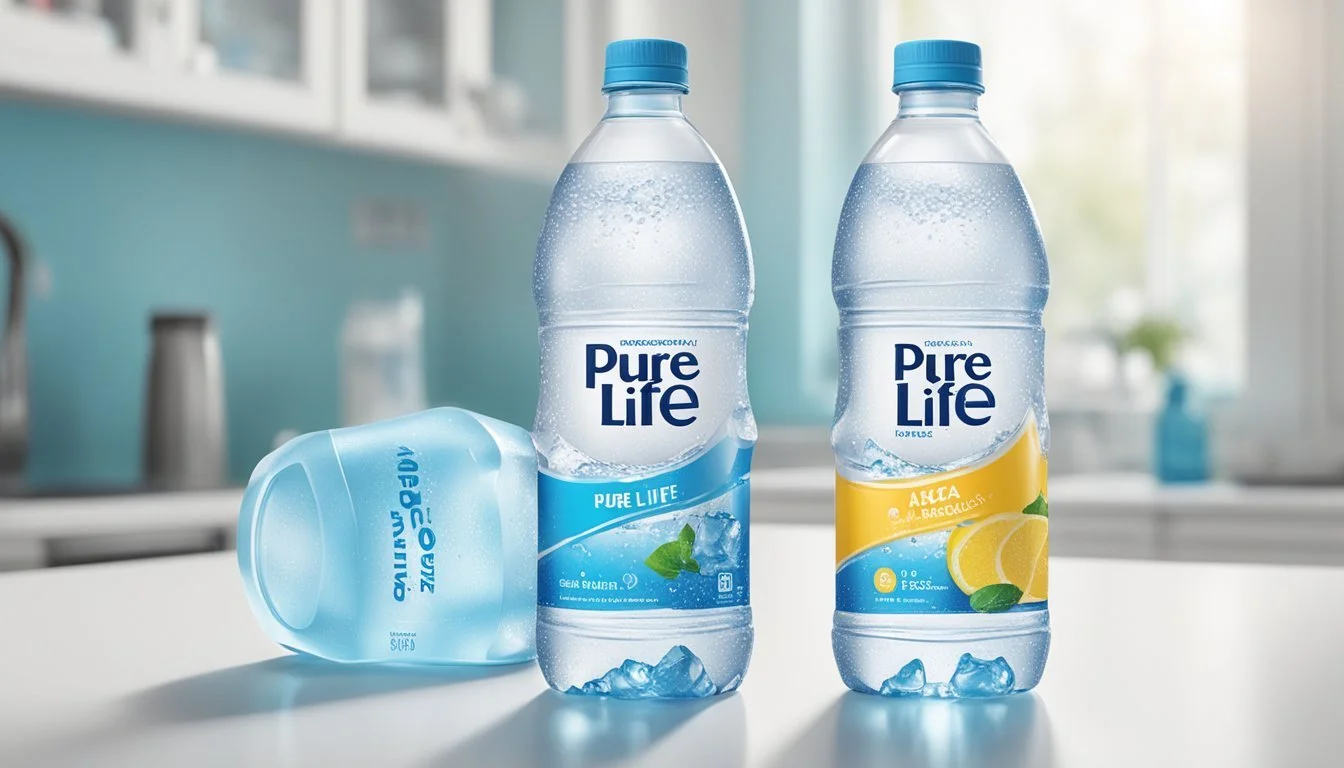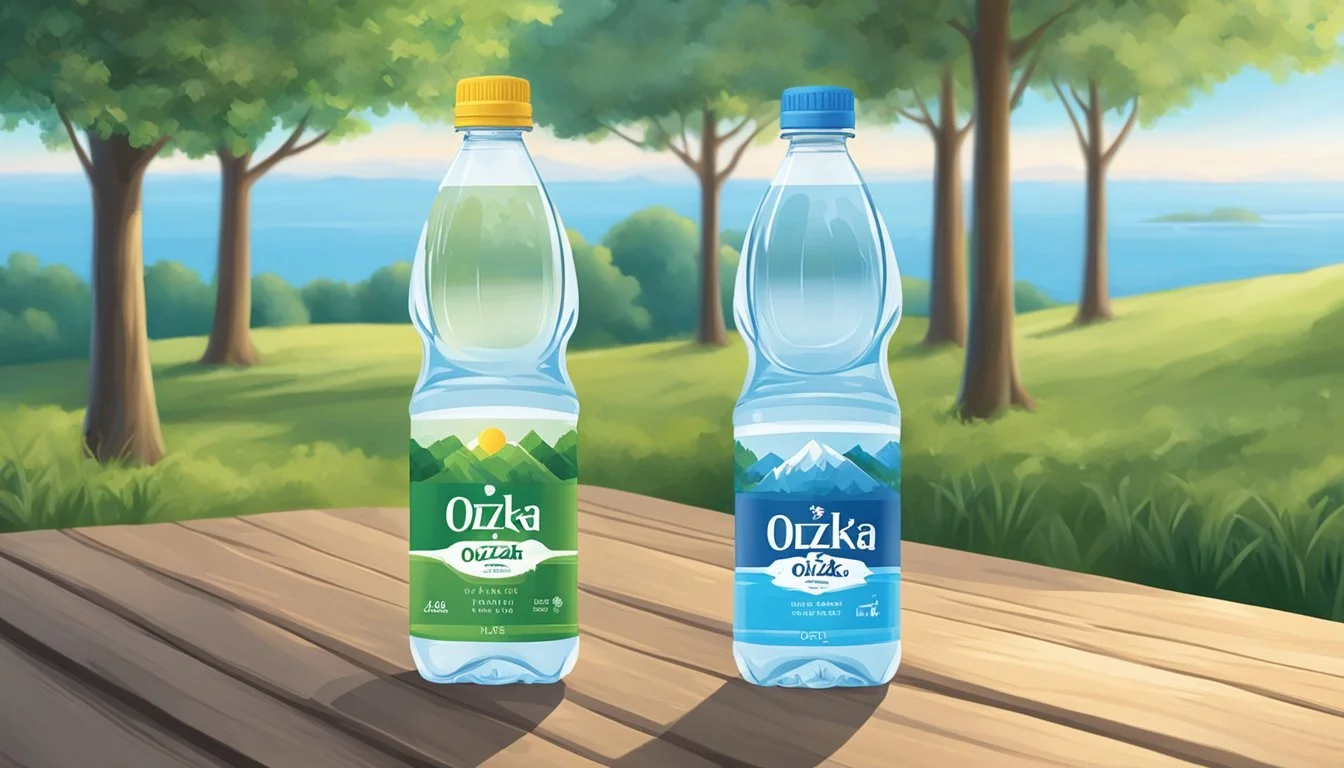Ozarka vs. Pure Life
The Ultimate Bottled Water Showdown
Choosing the right bottled water can make a significant difference in hydration and taste preferences. When comparing Ozarka and Pure Life, Ozarka's locally sourced Texas water can offer a distinct regional character that some consumers prefer. On the other hand, Pure Life, owned by Nestlé, is widely accessible in larger quantities and often praised for its consistent taste.
Ozarka prides itself on its natural spring water, which may appeal to those prioritizing regional sourcing and a cleaner taste profile. Pure Life, marketed for its purification process, provides a reliable option that ensures safety and quality, even if it lacks the unique flavor of spring water.
When deciding between these two brands, factors like regional sourcing, water processing methods, and personal taste preferences come into play. Both Ozarka and Pure Life provide hydration solutions that cater to different consumer needs, balancing cost, taste, and accessibility.
History and Overview of Ozarka and Pure Life
Ozarka and Pure Life are well-known bottled water brands with distinct histories and market positions. Ozarka sources its spring water locally from Texas, while Pure Life, owned by Nestlé, is renowned for its purified water. Both brands cater to hydration needs with unique approaches.
Brand Roots and Evolution
Ozarka traces its roots back to 1905 when it began as a local spring water provider in Texas. It focused on delivering natural spring water to consumers in the region. Over the decades, Ozarka expanded its reach but maintained its commitment to sourcing water locally from Texas springs.
Pure Life was introduced by Nestlé in 1998 as a purified water option. Initially, it targeted emerging markets but quickly expanded globally. Pure Life is a product of Nestlé Waters, the largest bottled water corporation worldwide, offering affordability and availability in various sizes.
Current Market Position
Ozarka is known for its regional presence and loyalty among consumers in Texas and surrounding states. Its emphasis on natural spring water appeals to those seeking a local and natural hydration source. Ozarka remains a prominent name in the southern United States bottled water market.
Pure Life holds a strong position in both domestic and international markets. It is widely available at affordable prices, often in bulk packaging, making it convenient for families and large groups. As part of the Nestlé portfolio, Pure Life benefits from extensive distribution networks and brand recognition.
Across different markets and consumer preferences, Ozarka and Pure Life provide trusted options for quality hydration.
Sourcing and Water Quality
In examining Ozarka and Pure Life, key aspects like the origins of their water, processes for purification, and adherence to safety standards play a crucial role.
Natural Sources and Collection
Ozarka sources its water locally from natural springs in Texas. The brand emphasizes regional sourcing, ensuring that the water has a distinct mineral content reflective of its origin. These natural springs are often chosen for their minimal environmental impact and high natural quality.
Pure Life, a Nestlé brand, typically sources its water from various locations around the world, including well fields and municipal sources. The cost-effectiveness of these sources allows for widespread distribution at competitive prices. Despite varied sources, Pure Life maintains a consistent approach to ensuring the water meets specific purity standards before it reaches consumers.
Filtration and Purification Processes
Ozarka uses a multi-step filtration process to ensure its water is safe and clean. This involves several stages, including sediment filtration, carbon filtration, and often ozone or ultraviolet light treatment. These processes help eliminate contaminants and retain essential minerals, ensuring the water remains both pure and naturally enriched.
Pure Life employs advanced filtration techniques, prominently including reverse osmosis and its proprietary Hydro-7 process. This seven-step purification system is designed to remove impurities such as heavy metals, lead, arsenic, and other potential contaminants. Moreover, electrolytes are often added to enhance taste and hydration.
Safety Standards and Regulatory Compliance
Both brands adhere strictly to regulations set by agencies such as the Environmental Protection Agency (EPA) and the Food and Drug Administration (FDA). These regulations mandate regular testing for contaminants, including PFAS chemicals, ensuring that the water is free of harmful substances.
Ozarka's commitment to safety means rigorous testing at multiple points from collection to bottling. This dedication to quality control helps prevent contamination and ensures compliance with both federal and state regulations.
Pure Life also demonstrates a strong commitment to safety, with a comprehensive system of checks and balances. Regular testing and certification mean that each bottle meets or exceeds safety standards, offering consumers peace of mind regarding water quality and safety.
Health and Nutrition Profiles
Ozarka and Pure Life bottled waters have distinct health and nutrition profiles, which can influence consumer choice. This section will focus on the mineral content, health benefits, pH levels, and alkalinity of each brand.
Mineral Content and Health Benefits
Ozarka sources its water from springs in Texas, resulting in a unique mineral composition. The minerals typically found in Ozarka water include calcium, magnesium, and potassium. These minerals are essential for maintaining bone health, muscle function, and heart health.
Pure Life, produced by Nestlé, is known for its uniform sourcing and consistent mineral content. It often contains added minerals such as sodium, magnesium, and calcium for taste and health benefits. While moderate sodium levels are beneficial for hydration and electrolyte balance, consumers with dietary restrictions should be mindful of their intake.
Calcium and magnesium in both brands are advantageous for metabolic functions and bone density. Potassium aids in muscle function and cardiovascular health.
pH Levels and Alkalinity
The pH level of bottled water influences its acidity or alkalinity, affecting taste and potential health benefits. Ozarka’s water generally has a neutral pH level, typically around 7.0, aligning closely with the body's natural pH level.
Pure Life water, similarly, maintains a pH level close to neutral, often ranging between 6.5 to 8.0. This ensures a smooth taste while promoting balanced pH levels in the body.
Alkaline water is reputed for neutralizing acidity in the body and providing improved hydration. However, for most consumers, the body's natural regulatory mechanisms make moderate pH levels ideal for daily consumption.
By focusing on these elements, consumers can make informed decisions about their bottled water choices based on personal health needs and preferences.
Taste Profile and Preference
Ozarka and Pure Life water brands offer distinct taste profiles shaped by their mineral content and sources. Consumer assessments and taste tests help identify which brand might cater to individual preferences more effectively.
Flavor Factors and Minerality
Ozarka sources its water from springs in Texas, contributing to its unique mineral content and taste. This water tends to have a slightly higher mineral content, giving it a subtly richer flavor that some consumers describe as "earthy" or "natural."
Pure Life, often derived from various sources and heavily purified, tends to have a more neutral flavor. This minimal mineral presence results in a clean, crisp taste. It's often chosen by those who prefer a less pronounced flavor in their bottled water.
Consumer Taste Tests and Reviews
Consumer preferences for Ozarka and Pure Life can be gauged through various taste tests and reviews. On platforms like YouTube and Twitter, Ozarka is frequently noted for its distinct, robust mineral taste, which appeals to those who appreciate a more substantial water flavor.
Pure Life, with its clean and crisp profile, often garners favorable reviews for everyday hydration. Many consumers appreciate its consistency in taste regardless of batch or source. Rankings and comparisons in articles and reviews frequently highlight these differences, helping buyers make informed choices based on their taste preferences.
Environmental Impact and Sustainability
Understanding the environmental impact and sustainability practices of bottled water brands is crucial for making an informed choice. This comparison of Ozarka and Pure Life covers their eco-friendly policies and how they handle packaging and plastic waste.
Eco-Friendly Practices and Policies
Both Ozarka and Pure Life aim to implement eco-friendly practices to reduce their environmental footprint.
Pure Life focuses on sustainability through initiatives like water stewardship programs and local sourcing to minimize transportation emissions. Efforts include partnerships with conservation organizations to improve water usage efficiency and protect water sources.
Ozarka emphasizes sourcing its water from natural springs and invests in sustainable operations. Their environmental commitment includes habitat conservation and community involvement to ensure the longevity of water sources. Both brands aim to balance business goals with environmental responsibility, adopting policies that mitigate negative environmental impacts.
Packaging and Plastic Waste
Packaging is a major concern for bottled water brands given the environmental impact of PET plastic bottles.
Pure Life has taken steps to incorporate recycled plastic into their bottles, reducing the demand for new plastic production. Despite these efforts, reports indicate high levels of plastic particles in their water, raising health and environmental concerns.
Ozarka also utilizes PET plastic but focuses on increased recyclability. They promote proper disposal and recycling of bottles to reduce plastic waste. Public campaigns and partnerships support local recycling initiatives to decrease environmental pollution.
Both brands recognize the importance of reducing plastic waste and are investing in technologies and strategies to create a more sustainable product lifecycle.
Comparative Analysis
This section will focus on comparing Ozarka and Pure Life in terms of their price point, value for money, market availability, and accessibility. These factors are crucial for consumers when selecting their preferred bottled water brand.
Price Point and Value for Money
Ozarka sources its water locally from Texas, which can result in varying prices depending on the region. Ozarka often appeals to consumers who prefer supporting local sources. Despite regional price variations, Ozarka generally maintains competitive pricing.
Pure Life often sells its products in larger quantities, potentially reducing the cost per bottle. This can make Pure Life an attractive option for consumers seeking affordability. The brand positions itself as providing quality hydration at a reasonable cost, making it suitable for bulk purchases.
A comparison of specific pricing:
Ozarka: Priced moderately with regional variations.
Pure Life: Often cheaper per bottle when bought in bulk.
Market Availability and Accessibility
Ozarka is primarily available in Texas and surrounding regions. This local focus might limit its availability in other parts of the country. However, it is well-received in areas where it is sold, benefiting from strong regional brand loyalty.
Pure Life, on the other hand, has a global presence. It is widely available in various retail formats, from small convenience stores to large supermarkets. This extensive market reach makes it a convenient choice for many consumers.
Availability comparison:
Ozarka: Predominantly available in Texas and nearby states.
Pure Life: Widely available nationwide and internationally.
These factors influence consumer preferences significantly, guiding their choices based on price and accessibility.
Final Recommendations
When choosing between Ozarka and Pure Life, several factors come into play.
Health Benefits: Ozarka sources its water from natural springs in Texas, potentially offering natural minerals. Pure Life, on the other hand, often undergoes rigorous purification processes. Both brands provide safe hydration but in different forms.
Taste: Taste preferences differ among individuals. Some may prefer the natural spring taste of Ozarka, while others might find Pure Life's purified water more appealing. Personal preference here plays a crucial role.
Environmental Impact: Both brands use plastic bottles, which have environmental implications. Investigating local recycling programs and reducing single-use plastics could be beneficial regardless of the brand.
Economic Considerations: Pure Life is often sold in larger quantities, which might reduce the cost per bottle. Ozarka's price can vary by region, potentially making it more expensive or more affordable depending on your location.
Sustainability: Consumers should consider the sustainability efforts of each brand. Ozarka's local sourcing helps reduce transportation emissions. Researching each company's commitment to environmental practices can guide a more sustainable choice.
Consumer Preferences: Consumer preferences often rest on factors like taste, cost, and brand loyalty. Both brands have their unique selling points, and trying both could help determine the better fit.
Choosing between Ozarka and Pure Life depends on individual priorities such as health benefits, taste preference, and environmental impact. Explore these factors to make an informed decision.
More About Ozarka
Mountain Valley Spring Water vs Ozarka: Which Bottled Water is Better?
Ozarka vs Kirkland Signature: Which Bottled Water is Better?
Ozarka vs Richard's Rainwater: Which Bottled Water is Better?
Ozarka vs Whole Foods Italian Still Mineral water: Which Bottled Water is Better?
More About Pure Life
Cascade Mountain vs Pure Life: Which Bottled Water is Better?
Hawaii Volcanic vs Pure Life: Which Bottled Water is Better?
Hawaiian Springs vs Pure Life: Which Bottled Water is Better?
Icelandic Glacial vs Pure Life: Which Bottled Water is Better?
Nestle Pure Life vs Pure Life: Which Bottled Water is Better?
Pure Life vs Kirkland Signature: Which Bottled Water is Better?
Pure Life vs Whole Foods 365: Which Bottled Water is Better?
Richard's Rainwater vs Pure Life: Which Bottled Water is Better?
Solan de Cabras vs Pure Life: Which Bottled Water is Better?
Talking Rain AQA vs Pure Life: Which Bottled Water is Better?
Whole Foods Italian Still Mineral water vs Pure Life: Which Bottled Water is Better?







